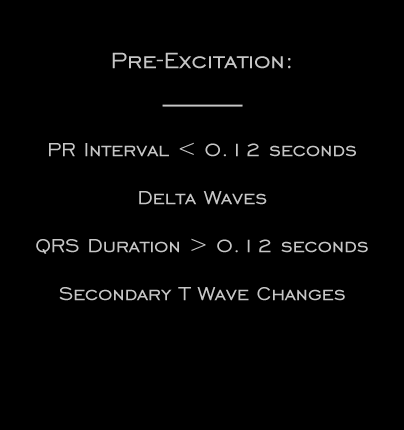
Whenever the bypass tract is involved in atrio-ventricular impulse transmission, the impulse will be conducted more rapidly over it than over the AV node and will pre-excite the ventricles. This is because the bypass tract behaves more like ventricular myocardium than the upper portion of the AV node, the region of slow conduction. The depolarizing current in the bypass tract, as in ventricular myocardium is via the rapid sodium-dependent inward current whereas that in the upper portion of the AV node depolarization is via the slow calcium-dependent inward current. The classical electrocardiographic features of ventricular pre-excitation include the following: 1) PR interval during sinus rhythm less than 0.12 seconds. 2) Slurring of the initial portion of the QRS complex, referred to as a Delta Wave. 3) QRS duration greater that 0.12 seconds 4) T wave changes that are secondary to the changes in depolarization.
